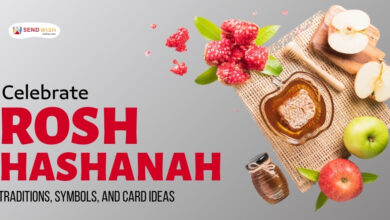Sparkling wine, often synonymous with celebration, is a type of wine that contains significant levels of carbon dioxide, giving it that delightful fizz. But there’s more to sparkling wine than just bubbles in a glass. Let’s dive into the effervescent world of sparkling wine and explore its many facets.
What is Sparkling Wine?
Sparkling wine is essentially any wine that has carbon dioxide bubbles. This carbonation can occur naturally through fermentation or can be added artificially. The result is a lively, bubbly beverage that is enjoyed worldwide.
Brief History of Sparkling Wine
The history of sparkling wine dates back to ancient times, but it was in the Champagne region of France where the method of making sparkling wine was perfected. The legend of Dom Pérignon, a monk who is often credited with inventing champagne, highlights the mystique and allure of this bubbly beverage.
Types of Sparkling Wine
Champagne
Champagne is the most famous type of sparkling wine, produced exclusively in the Champagne region of France. It’s made using the traditional method and is known for its complexity and elegance.
Prosecco
Hailing from Italy, Prosecco is a light, fruity sparkling wine made using the Charmat method. It’s perfect for casual occasions and is often more affordable than champagne.
Cava
Spain’s answer to champagne, Cava is produced primarily in the Catalonia region. Made using the traditional method, it offers excellent quality at a more approachable price point.
Other Notable Sparkling Wines
Beyond these well-known types, there are many other sparkling wines from around the world, such as Sekt from Germany and sparkling Shiraz from Australia, each offering unique characteristics and flavors.
Production Methods
Traditional Method (Méthode Champenoise)
This labor-intensive process involves a second fermentation in the bottle, which creates the bubbles. It’s used for making champagne, Cava, and many other high-quality sparkling wines.
Charmat Method
In this method, the second fermentation occurs in large tanks rather than individual bottles. This method is quicker and less costly, often used for Prosecco and other fruity sparkling wines.
Other Methods
There are other methods like the transfer method and carbonation, each contributing to the variety of sparkling wines available.
Key Regions for Sparkling Wine
Champagne, France
The gold standard for sparkling wine, Champagne is known for its strict production rules and high-quality output.
Prosecco, Italy
The rolling hills of Veneto produce the Glera grapes that are essential for Prosecco, known for its fresh and fruity profile.
Cava, Spain
Cava production is centered in Catalonia, with a long tradition of crafting excellent sparkling wines using local grape varieties.
Emerging Regions
Regions like California, England, and South Africa are gaining recognition for their high-quality sparkling wines, adding exciting options to the market.
Grapes Used in Sparkling Wine
Chardonnay
A key grape in champagne and many other sparkling wines, Chardonnay contributes elegance and minerality.
Pinot Noir
Often used in blanc de noirs and rosé sparkling wines, Pinot Noir adds depth and complexity.
Glera
The primary grape in Prosecco, Glera is known for its light, aromatic qualities.
Other Varieties
Many other grapes, such as Pinot Meunier, Xarel-lo, and Chenin Blanc, are used to create diverse and interesting sparkling wines.
Tasting Notes and Flavor Profiles
Understanding Tasting Notes
Tasting sparkling wine involves noting the aromas, flavors, and mouthfeel. Common descriptors include fruity, floral, yeasty, and mineral.
Common Flavor Profiles
Sparkling wines can range from dry and crisp to sweet and fruity, with flavors of green apple, citrus, brioche, and almond often present.
How to Serve Sparkling Wine
Proper Serving Temperature
Sparkling wine should be served chilled, typically between 45-50°F (7-10°C), to enhance its refreshing qualities.
Choosing the Right Glassware
Flutes are traditional, but white wine glasses can also be used to better capture the aromas.
Pairing Sparkling Wine with Food
Classic Pairings
Sparkling wine pairs beautifully with a variety of foods, from oysters and caviar to fried chicken and sushi.
Unexpected Pairings
Try sparkling wine with spicy dishes, salty snacks, or even popcorn for a delightful contrast.
Popular Sparkling Wine Cocktails
Mimosa
A classic brunch favorite, made with equal parts sparkling wine and orange juice.
Bellini
A refreshing Italian cocktail combining Prosecco and peach purée.
French 75
A sophisticated mix of gin, lemon juice, sugar, and champagne.
The Joy of Sparkling Wine
Sparkling wine brings a sense of celebration and joy to any occasion. Its versatility, range of flavors, and rich history make it a fascinating and enjoyable beverage. So, pop open a bottle and explore the delightful world of sparkling wine.



